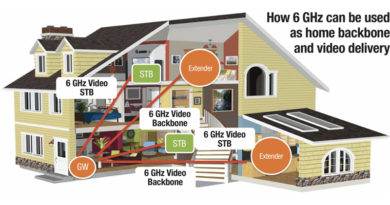1.8 GHz Devices: Ready for Primetime
By Greg Worthman
The promise of 10G broadband speeds is rapidly coming into focus. To get there, broadband service providers must continue to modernize infrastructure to meet the need for higher bandwidth in HFC networks. During the recent SCTE Cable-Tec Expo in Philadelphia, multiple vendors showed products designed to facilitate this network upgrade, with many suggesting that a transition to 1.8 GHz passive products will facilitate the coming evolution to 10G.
Enterprise customers have always been the leaders in driving the need for faster upload speeds. Businesses typically move greater amounts of data and files between locations, driving the need for a larger upstream pipe from their service provider. In a phenomenon accelerated by the pandemic however, residential customers are finding need to send increasing amounts of data upstream.
DOCSIS 4.0 promises to bring a whole new wave of innovation as it brings multiple gigabits to the residential consumer. Deloitte’s “2022 Connectivity and Mobile Trends Survey” (third edition) suggests that the average home has 22 connected devices. As customers experience the benefits of automated homes, they will look for ever-greater connectivity in everything from appliances, to entertainment, and even remote healthcare choices. Clearly, residential infrastructure and the cable plant that serves it, must be in place to take advantage of multi-gig services.
An article in Fierce Telecom reports that service providers are preparing to roll out 1.8 GHz devices to consumer homes beginning next year (Fierce Telecom, CommScope, ATX execs dish on DOCSIS 4.0 work, September 22, 2022). In evaluating new devices, there are key criteria that will help service providers as they consider rolling out 1.8 GHz capable products.
With current deployments focused on 1.2 GHz technology, new products should fulfill the need for return path expansion, including mid-split (5 MHz to 85 MHz) and high-split (5 MHz to 204 MHz), while being 1.8 GHz ready, thus prepared to meet the bandwidth necessary for DOCSIS 4.0. At the same time, product engineers must ensure that their new amplifiers, splitters and other devices continue to deliver on the main elements of modern networks: speed, security, high-reliability and low latency. High isolation losses between the splitter ports are carefully incorporated to minimize the effect of high return transmit levels from DOCSIS 3.1/4.0 modems and potential interference with customer premise equipment. As always, engineers will also need to consider adequate shielding from electromagnetic ingress and egress, as well as surge protection because of poorly regulated power from the local utility.
Operationally, ideal products will allow craftpersons to install and troubleshoot using established tools and methodology. To the extent that training can be minimized, transition to higher bandwidth can be straightforward, taking advantage of the fact that the current deployed infrastructure can handle continued upgrades to higher bandwidth.
From a technician’s standpoint, familiarity with device form and function will assure smooth installations. Service providers should expect vendors to adhere to designs that carry identical or similar form factor to current 1.2 GHz technology. More advanced vendors will carry forward designs that easily utilize existing housings, particularly when those enclosures allow quality connections to be made outside the confines of the wall box before snapping the device into place. Such capability is estimated to save 30% of device install time.
As our industry continues to evolve to 10G broadband speeds, service providers will modernize infrastructure to meet the need for this higher bandwidth. Multiple vendors are putting the finishing touches on their 1.8 GHz products that will allow consumers to take full advantage of this increased bandwidth.
 Greg Worthman,
Greg Worthman,
Product Management Director,
Amphenol Broadband Solutions
Greg Worthman is Amphenol Broadband Solutions’ Product Management Director for RF components designed for the local area network in the home, and OSP enclosures for network transport equipment. He attended the University of Minnesota and has over 45 years in the CATV industry.
Shutterstock



